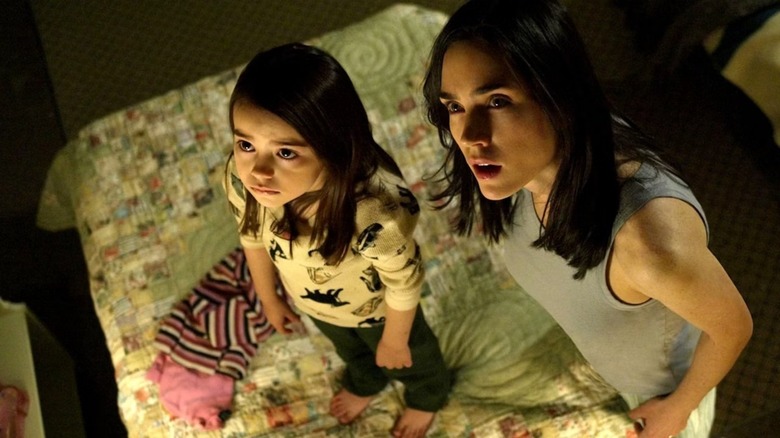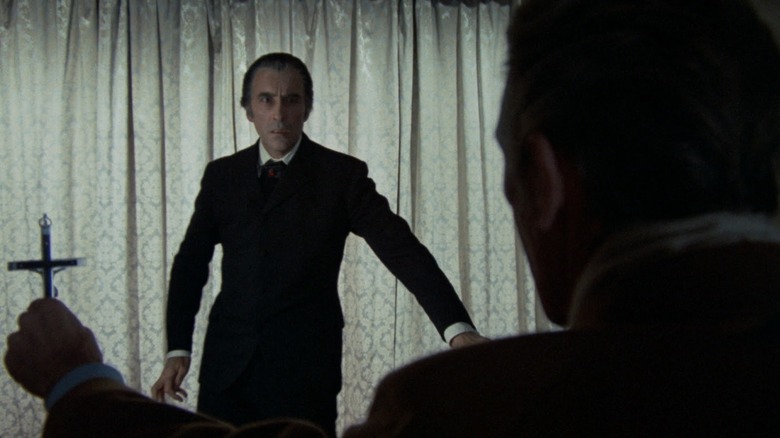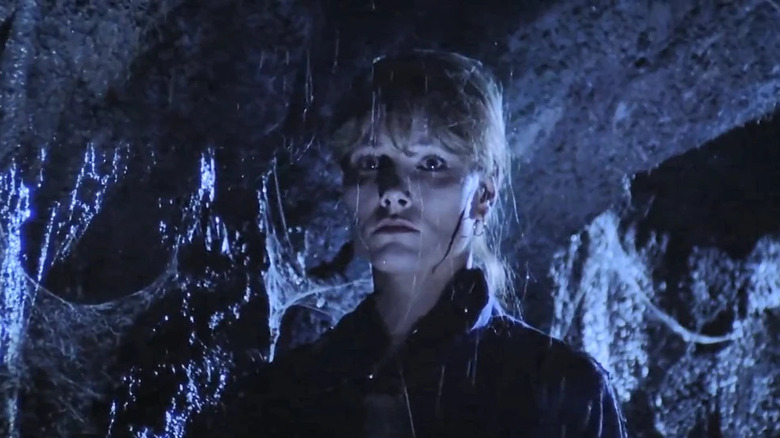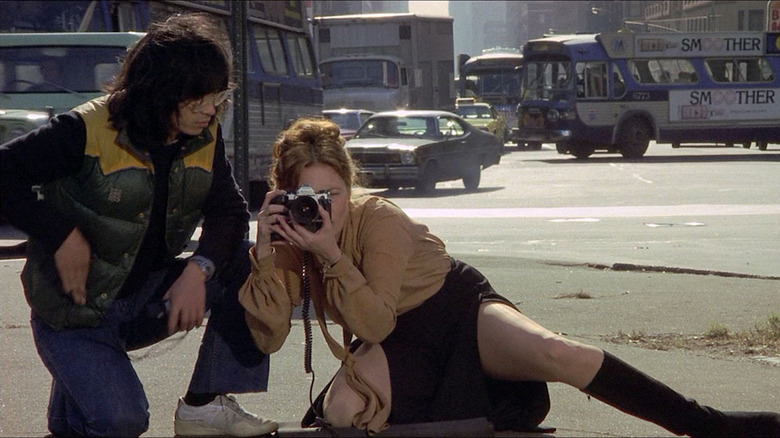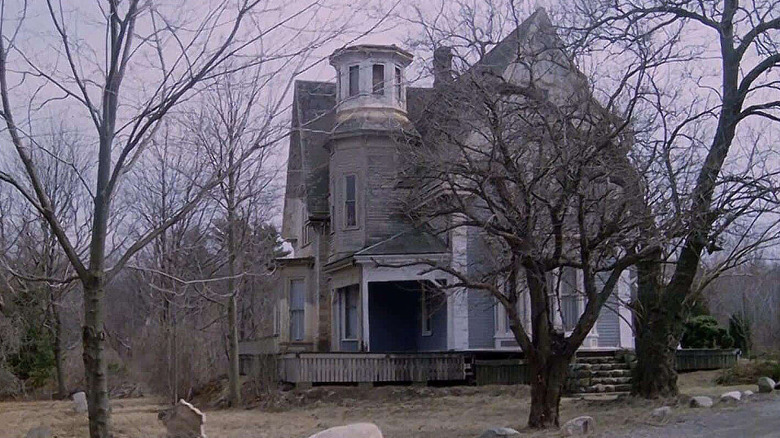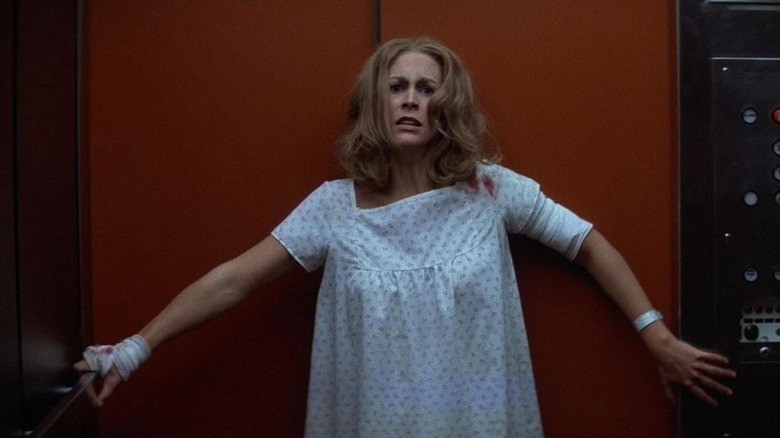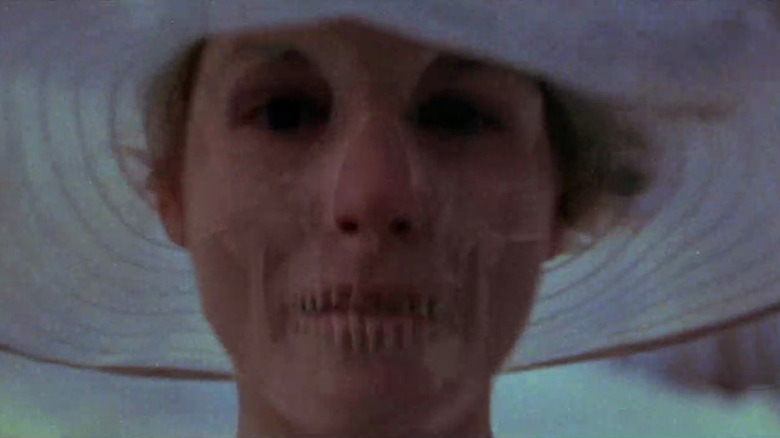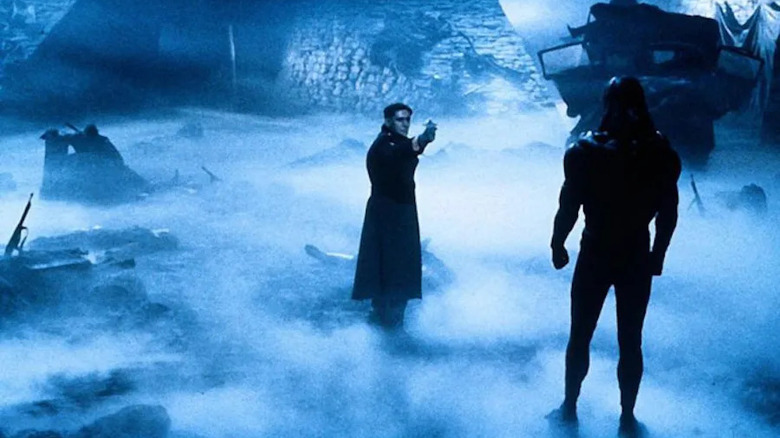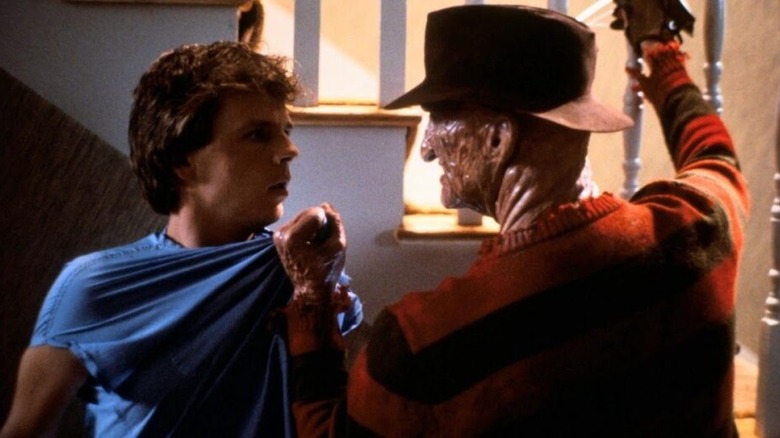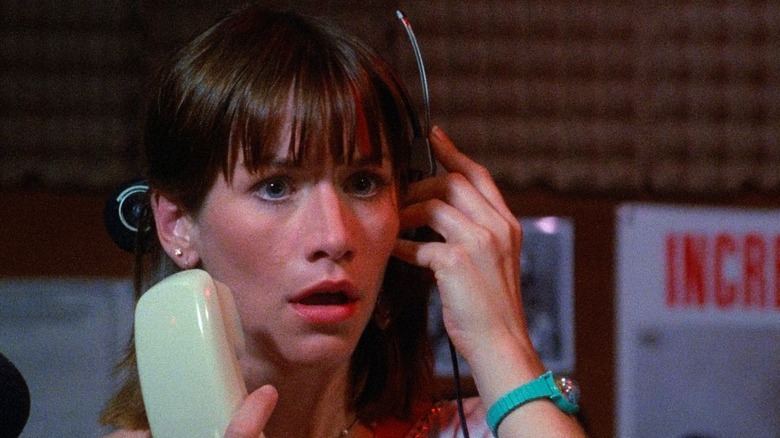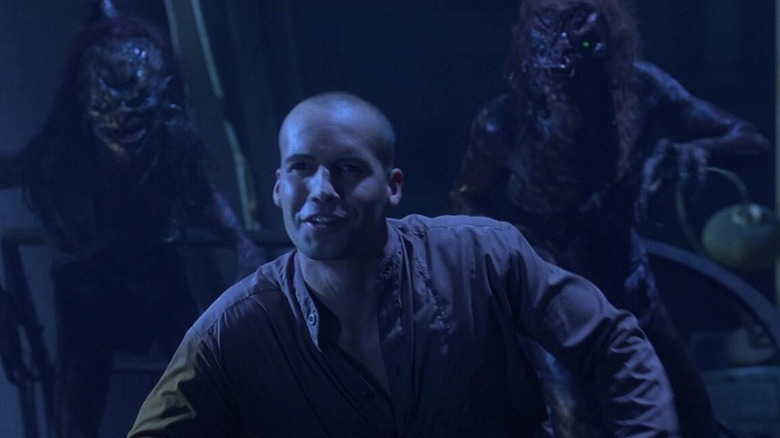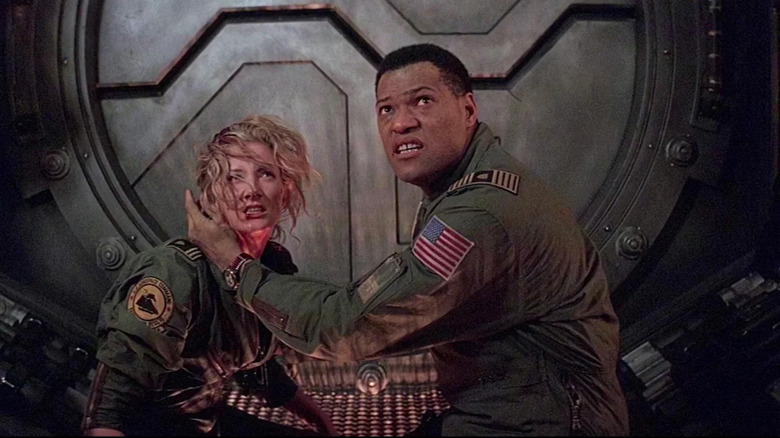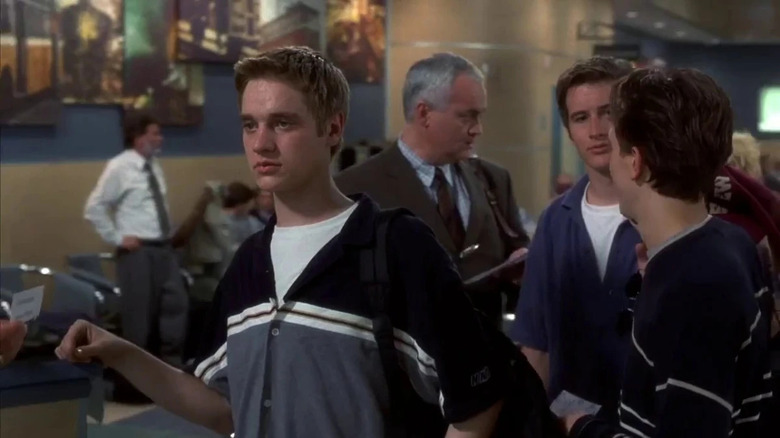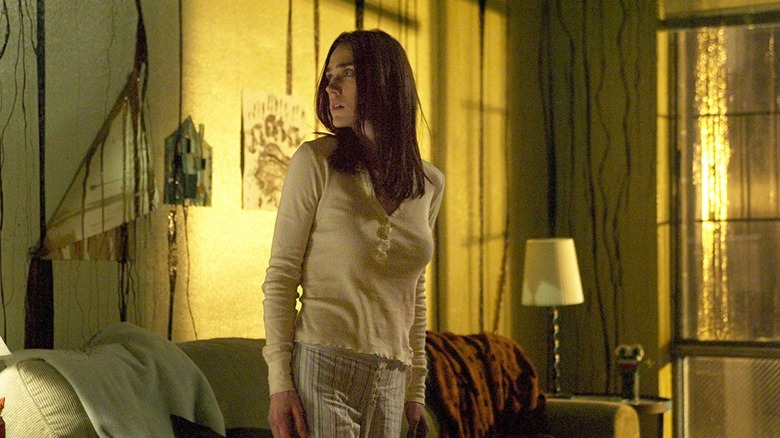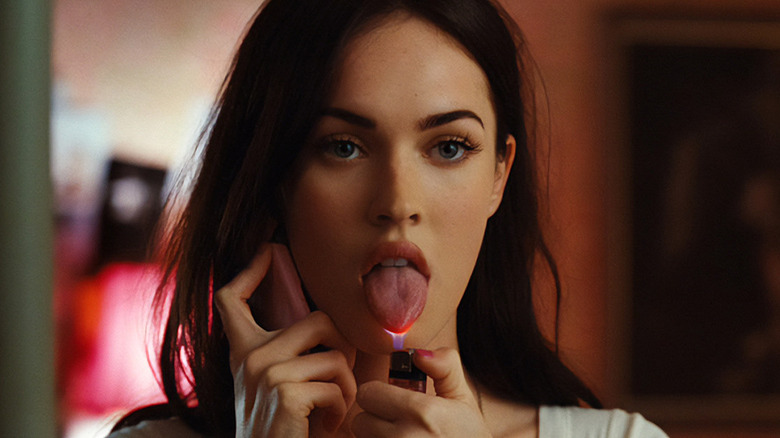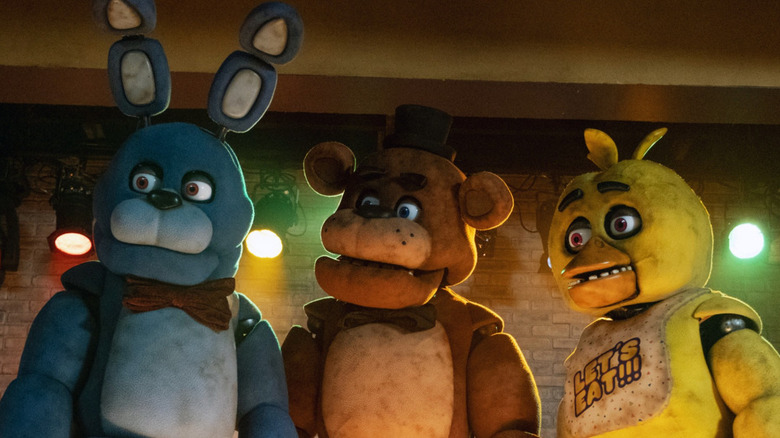15 Horror Movies With Awful Reviews That Are Actually Worth Watching
Not every horror movie is going to connect with critics, no matter how much the public loves it or if its wider reputation grows more favorably over time. These range from cult classics that earned legions of devoted fans to maligned sequels and reboots that didn't deserve the critical hate they got upon release. Simply put, even the most poorly reviewed horror flicks deserve a reappraisal and are, at the very least worth a look from the curious and unfamiliar.
There are plenty of horror movies that hold a rotten critics' approval rating on Rotten Tomatoes that still make for interesting, and in many cases, even great viewings. With everything from supernatural giallo movies to slasher sequels that subvert expectations, there is a horror movie for every scary sensibility. Here are the 15 horror flicks that didn't connect with most critics that should be given at least one solid viewing.
The Satanic Rites of Dracula
Hammer Film Studios had steadily pumped out Dracula movies ever since the international success of "Dracula" in 1958, cementing Christopher Lee in the role. Lee's final turn as the legendary vampire was in 1973's "The Satanic Rites of Dracula," a direct sequel to the preceding year's "Dracula A.D. 1972." A cult headed by Dracula plots to unleash a genetically engineered strain of the bubonic plague on humanity, placing them in conflict with the British Secret Service. Leading the team to stop the cult and destroy Dracula for good is Professor Van Helsing, whose family has been battling the vampire for over a century.
There is always a unique thrill watching Christopher Lee and Peter Cushing square up on-screen as Dracula and Van Helsing. Though Hammer's vampire formula had grown thin by "The Satanic Rites of Dracula," Lee and Cushing continue to be the best parts of the movie. With reductions to the production budget becoming more apparent, the actors do the best they can with the material they're given. Compared to "Dracula A.D. 1972," "The Satanic Rites of Dracula" offers a better balance in tone, while retaining its subtly self-aware campy elements.
City of the Living Dead
Though filmmaker Dario Argento is hailed as the master of giallo, Italian horror that earned international recognition in the '70s and '80s, another prolific giallo director is Lucio Fulci. Fulci helmed a number of horror movies in his extensive career, including the thematically linked "Gates of Hell" trilogy. The first of these is 1980's "City of the Living Dead," a blend of supernatural Lovecraftian influences and contemporary zombie movies. After a priest commits suicide, he opens a portal to Hell that unleashes the ravenous undead.
Taken on its face as a zombie movie, "City of the Living Dead" is a clumsy mess, with derivative gore and shoddy acting. Where the movie shines is Fulci's eye for creating an effective atmosphere and veering into the surreal. "City of the Living Dead" isn't among Fulci's best, or even the best of the "Gates of Hell" trilogy, but the components that made it so memorable are present. Running heavy on gore, "City of the Living Dead" is among Fulci's most lurid work, and for those not put off by graphic violence, it's worth checking out.
Eyes of Laura Mars
Before Irvin Kershner directed "The Empire Strikes Back" and John Carpenter released "Halloween," they made the 1978 supernatural horror movie "Eyes of Laura Mars." New York fashion photographer Laura Mars begins to witness murders around the city through the eyes of the killer. With the victims close to Laura's personal life and mirroring her photoshoots, Laura teams up with a police officer to stop the murderer. However, Laura quickly learns that the killer is closer to her than she previously thought.
"Eyes of Laura Mars" combines giallo influences with some serious acting clout, with Faye Dunaway starring as Laura, as well as an early role for Tommy Lee Jones. Contemporary critics were less impressed with the execution of the movie, dismissing it as a bigger budget slasher movie. However, the first-person premise makes for an interesting twist on the genre, and Jones leaves a strong impression. While the broader story might come off as formulaic to those with a passing familiarity of slasher movies, "Eyes of Laura Mars" establishes Carpenter's horror chops.
The House by the Cemetery
Inspired by Lovecraft for "City of the Living Dead," Lucio Fulci fully embraced Lovecraftian elements for "The House by the Cemetery," the end of the "Gates of Hell" trilogy. The 1981 film has a family move to a dilapidated New England home with a grim history. After tombs in the home's cellar are discovered, strange occurrences begin to escalate, leaving a gruesome body count. As the family struggles to survive, the true, nightmarish history behind their new home comes to the surface.
If "City of the Living Dead" is a mash-up of Lovecraft and zombies, "The House by the Cemetery" is a blend of Lovecraft and Frankenstein. Compared to some of Fulci's other, gorier work, "The House by the Cemetery" offers a bit more restraint – but only a bit. Shot on location in New England, Fulci captures the setting's haunting mood well as his ultimate tribute to Lovecraft. Though many of the common flaws in Fulci's filmography are noticeable, the movie succeeds more on the strength of its atmosphere than its scares.
Halloween II (1981)
While the original "Halloween" is a perfect standalone slasher movie, its enormous success at the box office and open ending virtually guaranteed a sequel. After completing "The Fog," the creative team of John Carpenter and Debra Hill turned their attention to "Halloween II," released in 1981. Taking place minutes after the original 1978 "Halloween," Michael Myers learns Laurie Strode, the survivor of his rampage earlier that night, has been admitted to a nearby hospital. With only a skeleton crew working the late night shift, Michael resumes his killing spree as he moves to finish off Laurie.
Of the numerous sequels and reboots to follow, the original "Halloween II" is the only one that feels borne of the DNA as the first movie. Director Rick Rosenthal maintains much of the cinematography and tone from the 1978 classic, while the amount of on-screen violence is heightened considerably. By the time "Halloween II" hit the screen, countless imitators of the original had followed, making the true sequel feel derivative at the time. However, compared to what subsequently became of the franchise, "Halloween II" is definitely among the series' stronger efforts.
Ghost Story (1981)
Peter Straub's best-selling 1979 novel "Ghost Story" was adapted into a feature film of the same name in 1981, streamlining the lengthy text. The movie opens with four elderly friends meeting in New England one particularly frigid winter to swap scary stories among themselves. After a tragedy befalls one of the group, supernatural occurrences begin to plague each of them. As the paranormal activity escalates, the men realize one scary story isn't as fictional as it appeared, with a ghost from their past haunting them.
"Ghost Story" is the final movie of classic Hollywood legends Fred Astaire and Douglas Fairbanks, Jr., which is worth the price of admission alone for classic film buffs. Purists of the novel will likely bristle at how much of the source material is cut from the adaptation, and this isn't unfair criticism. The movie's central mystery and climactic confrontation with the titular ghost doesn't really feel all that harrowing or unpredictable. However, beyond its impressive cast, "Ghost Story" does deliver plenty of atmosphere, with the adaptation presenting its story like a fairytale, fitting for its premise.
The Keep
Though filmmaker Michael Mann may be better known for his slick and stylish crime movies, like "Heat" and "Collateral," he did branch into horror in the '80s. 1983's "The Keep" blends World War II action with supernatural horror, adapting the 1981 novel of the same name by F. Paul Wilson. As the Nazis invade Romania in the early days of the war, they accidentally unleash an ancient entity that kills or drives mad those unfortunate enough to encounter it. The Nazi troops race to find a way to contain the entity as it threatens to engulf a nearby village and slaughter everyone in its path.
The studio, uncomfortable with the movie's initial length, significantly trimmed the runtime, affecting the overall coherence of the story. Despite the issues with the final cut, Mann's sharp visual style still comes through, even as "The Keep" struggles with its own creative ambition. The movie is also led by a stellar cast, including a moody Scott Glenn and prominent roles for a young Ian McKellen and Gabriel Byrne. One of the most offbeat projects in Mann's filmography, "The Keep" is definitely worth a look at what could've been something truly special.
A Nightmare on Elm Street 2: Freddy's Revenge
After the success of 1984's "A Nightmare on Elm Street," a sequel was fast-tracked into production and released the following year. "A Nightmare on Elm Street 2: Freddy's Revenge" follows high schooler Jesse Walsh who begins experiencing nightmares after moving into Springfield, the town from the first movie. Jesse is stalked in his dreams by gloved killer Freddy Krueger, who is able to use Jesse's body to emerge in the waking world. Jesse struggles to find a way to purge Freddy from himself before the sneering murderer can claim more victims.
"Freddy's Revenge" is a huge departure from the first movie, particularly how its titular slasher operates in the sequel. At the same time, it's only the second movie in the series, and to the filmmakers' credit, the sequel isn't a rehash of the original. With that level of expectation calibrated, "Freddy's Revenge" is a fun outlier in the franchise, and offers interesting commentary on coming-of-age sexual identity. For a franchise still trying to find its own voice, "Freddy's Revenge" mixes things up rather than immediately settling for a familiar formula.
The Texas Chainsaw Massacre 2
After helming the groundbreaking "The Texas Chain Saw Massacre" in 1974, filmmaker Tobe Hooper released a sequel, "The Texas Chainsaw Massacre 2," over a decade later in 1986. The cannibalistic Sawyer family, including the chainsaw-wielding maniac Leatherface, targets local radio DJ Stretch Brock after she overhears Leatherface kill two victims on the air. This coincides with former Texas Ranger Lefty Enright tracking down the Sawyer family to avenge his nephew, who was murdered by Leatherface in the first movie. As Lefty rescues Stretch, he and the Sawyers have a bloody showdown at an amusement park to settle this family feud once and for all.
In contrast to "The Texas Chain Saw Massacre," which played its darkly comic undertones more subtly, "The Texas Chainsaw Massacre 2" is an overtly subversive comedy. Dennis Hopper chews the scenery every time he appears and many of the Sawyers' antics are clearly played for laughs. This abrupt shift in tone definitely caught audiences off-guard upon the movie's initial release, especially in comparison with its predecessor. Hooper still brings the scares and even more gruesome kills, though, with "The Texas Chainsaw Massacre 2" containing one of the best jump scares in the genre.
Demon Knight
Horror comics of the 1950s served as the basis for the popular HBO series "Tales from the Crypt," one of the premium cable channel's biggest successes with its early original programming. As the series neared the end of its run, it produced the 1995 spinoff feature film "Demon Knight." The show's undead Crypt Keeper introduces the premise, with a demon hunting a powerful religious artifact through the American Southwest. A drifter carrying the artifact comes across a group of strangers, who quickly become drawn into an adventure that could unleash Hell on Earth.
Lambasted by critics for not being particularly scary or funny, "Demon Knight" feels like an extended episode of "Tales from the Crypt." The dark humor and level of sex and violence largely matches what aired on HBO, while the production budget doesn't feel increased all that much. Still, for fans of the television series, there are enough familiar elements to enjoy, with a whole host of recognizable actors carrying the movie forward. At the very least, "Demon Knight" is leagues better than the subsequent "Tales from the Crypt" films that followed it, as the franchise quickly floundered out.
Event Horizon
Blending hard science fiction with the supernatural can be a tricky feat, with this juxtaposition at the heart of 1997's "Event Horizon." Set in the year 2047, the titular spaceship resurfaces around Neptune seven years' after its disappearance, prior to the start of the film. A rescue team sent to investigate what happened to the ship learns that its experimental drive opened a portal to Hell. With the Event Horizon itself possessed by a demonic entity, the team moves to destroy the evil ship and seal the dimensional rift before they become its latest victims.
Concerned at the graphic content and the movie's overall length, the studio heavily edited "Event Horizon" ahead of its theatrical release, tampering with director Paul W.S. Anderson's intended cut. The resulting film was critically lambasted upon release, but became a sleeper hit when it was released on home video. What "Event Horizon" lacks in substance it makes up for with an unabashed '90s atmosphere, combining its sci-fi premise with supernatural undertones and industrial aesthetics. An effective haunted house movie in space, "Event Horizon" is a '90s flick that is far better than the critical reception it got.
Final Destination
Though "Final Destination" has evolved into a full-blown multimedia franchise, including four sequels, the 2000 original film was not well-received by critics. Just prior to boarding a flight, a teenager named Alex has a vision that the plane will explode shortly after takeoff. After he persuades his friends to ditch the flight, Alex's vision becomes horrifically true, only for the survivors to learn they are being targeted by Death. As the survivors are picked off one-by-one in increasingly gruesome ways, Alex and his friends try to find a way to cheat Death for good.
In contrast to its sequels, the first "Final Destination" treats its stakes and deaths relatively straight-faced and serious. This difference in tone makes for an overall darker and more intense experience, but many of the franchise hallmarks are still present right from the initial movie. Devon Sawa gives one of his best performances as Alex and anchors the entire movie and its admittedly cartoonish premise. "Final Destination" succeeded in kicking off one of the 2000s most memorable horror franchises, even if it wasn't in on its own joke.
Dark Water (2005)
Of all the Japanese horror movies to get American remakes, "Dark Water" is one of the more surprising choices to get the Hollywood treatment. The 2005 remake stars Jennifer Connelly as Dahlia, a recently divorced mother, who relocates to a cheap apartment building on Roosevelt Island with her young daughter. As a strange leak of dark water forms on the ceiling, Dahlia begins experiencing ghostly visions. Dahlia learns that these spectral sights are linked to the apartment's previous residents and are now targeting her daughter.
The American "Dark Water" plays out like a less effective riff on 2001's "The Others," which also featured a young mother and her children haunted at home. Joining Connelly are John C. Reilly, Tim Roth, and Pete Postelwaithe, with the impressive cast taking the material very seriously. Though "Dark Water" captures the melancholy atmosphere of its Japanese source material, it just isn't a particularly scary movie. However, as far as Hollywood remakes of Japanese horror movies, one can do much worse than "Dark Water," which is an overlooked chiller.
Jennifer's Body
Horror comedies are tricky to effectively pull off, simultaneously having to deliver scares and laughs in a balance both genres. 2009's "Jennifer's Body" offers a twist on coming-of-age high school stories with demonic horror and bloody kills. After enduring a demonic ritual, popular cheerleader Jennifer Check is transformed into a ravenous succubus. As Jennifer begins preying on classmates, her best friend Needy moves to learn what happened to her and stop her from killing again.
Lead actors Megan Fox and Amanda Seyfried are both in top form here, knowing when to lean into the campy premise and when to pull back with genuine emotion. Contemporary critics were less impressed, feeling the movie was a bit too clever for its own good and exploitative of Fox's image. In the years since, "Jennifer's Body" has developed into a decided cult classic, with fans enjoying the empowerment themes and snappy dialog written by Diablo Cody. A bit rough around the edges, there are plenty of campy thrills and sharp jokes in "Jennifer's Body" to enjoy.
Five Nights at Freddy's
The biggest horror movie of 2023 also received wide critical backlash, though nowhere near as bad as the reception to that year's "The Exorcist: The Believer." The long-gestating adaptation of "Five Nights at Freddy's," the popular horror game series, came out just in time for Halloween. A young man named Mike, haunted by the childhood disappearance of his brother, is hired as a night security guard at Freddy Fazbear's Pizza, an abandoned family entertainment center. As Mike unravels what happened to his brother, he learns that the animatronics come to life each night at the pizzeria and try to kill him.
With the franchise's creator Scott Cawthon serving as a co-writer and producer on the film, "Five Nights at Freddy's" contains plenty of nods to the fan-favorite games. The animatronics look just like they do in the games, but with its PG-13 rating, the scares are perhaps tamer than what fans may hope. Though the movie's surreal dream sequences throw off the overall pacing, "Five Nights at Freddy's" is riveting whenever its iconic animatronics are at play. Despite the poor critical reception, the movie got the last laugh, with an impressive box office haul and sequel in development.
